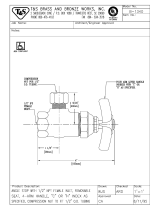
SECTION 3 - SERVICING and
CONVERSION
Important
BEFORE ATTEMPTING ANY SERVICING, SWITCH
APPLIANCE OFF AT MAIN GAS AND
ELECTRICITY SUPPLY ISOLATORS. CARE MUST
BE TAKEN TO ENSURE THESE ARE NOT
INADVERTENTLY SWITCHED ON DURING TASK.
Certain operations require pan to be tilted or the
activator repositioned with control panel removed. If
this is done electrically, care should be taken not to
touch any live terminals and that control panel is
supported adequately so that none of the live switch
parts or thermostat terminal can touch earthed parts.
General Note
AFTER ANY MAINTENANCE TASK, CHECK
APPLIANCE TO ENSURE IT PERFORMS
CORRECTLY. CARRY OUT ANY NECESSARY
ADJUSTMENTS AS DETAILED IN THE
APPROPRIATE SECTION OF THIS DOCUMENT.
After carrying out any servicing or exchange of gas
components -
ALWAYS CHECK FOR GAS TIGHTNESS
Warning: Great care should be taken when checking
for gas tightness, as, by necessity, electrical
components will be exposed and energised.
3.1 CONVERSION
When changing from one gas family to another
always ensure the following -
Change main, pilot and cross-lighting burner
injectors. Refer to Section 1.8. Injectors must be re-
sealed using thread sealant.
Set pressures, refer to Section 3.8.
Check pilot flame length. Refer to Section 1.10.
Change data plate.
For detailed procedure, refer to appropriate section in
this document.
3.2 REMOVAL OF FRONT CONTROL PANELS
3.2.1 Main Control Panel
Ensure pan is in DOWN position.
Pull off thermostat control knob.
On G2962 and G2994 models, remove handwheel by
undoing central fixing, take care to retain shaft key.
Open drop down door.
Remove fixings at corners of control panel bottom
edge and also those in top flange.
Pull panel clear of appliance and carefully rest it on
floor. Take care not to strain wiring.
Replace in reverse order.
3.2.2 Lower Inner Control Panel
Remove main control panel before removing fixings
for lower panel and pull clear.
3.3 BURNERS
Removal Of Main Burners
Tilt pan to fully raised position to allow access to
burner compartment.
Remove fixings that retain burners to base of
compartment.
Slide burner from injector and remove.
Replace in reverse order.
3.4 INJECTORS
3.4.1 Removal Of Main Burner Injectors
Remove main burners as detailed in Section 3.3.
Undo injectors or injector jets as required.
Replace in reverse order, ensuring that correct
injector is fitted to each burner – refer to Section 1.8.
Injectors must be re-sealed using thread sealant.
3.4.2 Removal Of Cross Lighting Burner
Remove main control panel. (See Section 3.2)
Tilt pan to fully raised position. On G2962/G2994
models, temporarily re-fit handle (with key) upon
shaft. On G2965/G2995, drop-down door must be
closed to operate foot bellows.
Undo compression fitting nut at cross-lighting burner
venturi.
From top, remove fixings that secure cross-lighting
burner and remove burner by lifting it up.
Replace in reverse order.
3.4.3 Removal Of Cross Lighting Injector
The complete burner can be removed as detailed in
Section 3.4.2. Alternatively, injector can be removed
leaving burner in position. To achieve this, remove
control panel, undo gas supply pipe compression
fitting nut and remove fitting from burner venturi tube.
Injector can now be removed for renewal or cleaning.
When re-assembling, the injector must be re-sealed
using thread sealant.















